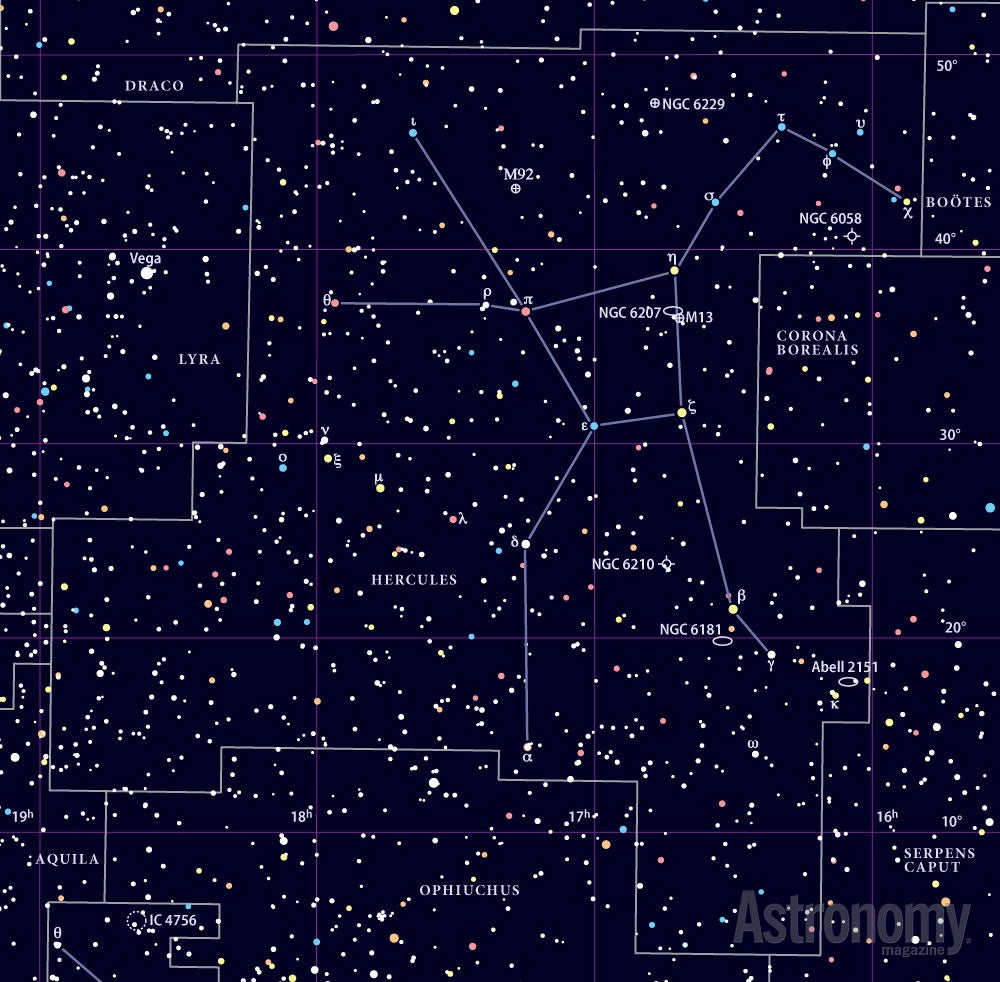
Expand your observing at Astronomy.com
StarDome
Check out Astronomy.com’s interactive StarDome to see an accurate map of your sky. This tool will help you locate this week’s targets.
The Sky this Week
Get a daily digest of celestial events coming soon to a sky near you.
Observing Talk
After you listen to the podcast and try to find the objects, be sure to share your observing experience with us by leaving a comment at the blog or in the Reader Forums.
Each week, Astronomy magazine Senior Editor Michael E. Bakich, a master at explaining how to observe, posts a podcast about three or more objects or events you can see in the sky.
Targets for June 14–21, 2012
Small telescope: Four open clusters in Scorpius
Large telescope: Spiral galaxy NGC 6181
Large telescope: Barred spiral galaxy NGC 6300
The gang of four
This week’s small-telescope target is a group of four open clusters you’ll find in southern Scorpius. The best of the bunch is NGC 6259. It shines at magnitude 8.0 and measures 8′ across.
You’ll find it 2.5° southwest of magnitude 3.3 Eta (η) Scorpii. Through a 4-inch telescope, you’ll see an evenly distributed glow. A 10-inch scope at 200x reveals nearly a hundred stars fainter than 12th magnitude. Several regions exhibit clumping — among them, one just east of the core and one at the western edge stand out.
After you’ve had your fill of NGC 6259, look 0.6° west-southwest for open cluster NGC 6249. This magnitude 8.4 object spans 6′ and has an unusual figure.
Next, move 1.5° west to NGC 6216. Oh, wait, maybe that’s NGC 6222. Actually, it’s both. Yep, astronomers make mistakes, too. Sir John Herschel swept this region of sky four times. For three of them, he got the cluster’s position correct. The fourth time, however, he misplaced it by more than a degree, causing the duplicate entry. Well, whatever you call it, this loose collection of stars spans 4′. A 4-inch scope will reveal a dozen of its members.
Finally, return to NGC 6249, and then head 40′ southwest. There you’ll find Lynga 14. This tiny cluster has a diameter of only 2′, but its magnitude is a decent 9.7. Through a 4-inch scope at a magnification of 150x, you can resolve 15 or so stars.
What? Never heard of a Lynga object? I’m not surprised. Gösta Lars Lyngå was an Australian astronomer who discovered 14 open clusters and published their positions in a catalog titled Studies of the Milky Way from Centaurus to Norma. II. Open Clusters in 1964.A hero’s galaxy
This week’s first large-scope object is spiral galaxy NGC 6181 in the constellation Hercules. Look for it 1.7° south-southeast of magnitude 2.8 Kornephoros (Beta [β] Herculis).
NGC 6181 lies twice as far away as the galaxies in the Virgo cluster, so don’t expect to see much detail through small- or even medium-aperture telescopes. Well, that, and it’s faint and small. The spiral glows at magnitude 11.9 and measures 2.3′ by 0.9′.
Through a 10-inch scope, you’ll see the oval halo oriented north to south. The core is broad and evenly lit. Through a 16-inch instrument, you may glimpse the thin spiral arms that appear at the northern and southern ends. The northern arm curves westward and the southern arm eastward.Star city on the altar
This week’s second large-telescope target is barred spiral galaxy NGC 6300, which lies in Ara the Altar. Look 2.7° southwest of magnitude 3.6 Delta (δ) Arae to see this magnitude 10.1 object.
This galaxy appears oval, stretched twice as long as it is wide, with a west-northwest to east-southeast orientation. Its given measurements are 5.2′ by 3.3′.
Through a 12-inch telescope, the core appears much brighter than the surrounding halo. No less than four 13th-magnitude stars superimpose on this galaxy’s face, two over the core and one each on the northern and southern end. Through a 20-inch scope, I assumed the presence of faint spiral arms by the dark areas near NGC 6300’s the central region.









